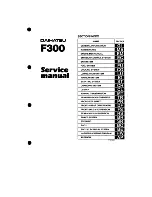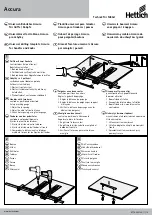
7
3.
Cut
the
black
lead
to
the
desired
length.
4.
If
the
connection
is
being
made
under
the
dash
or
in
the
vehicle
cabin,
connect
the
black
lead
directly
to
the
chassis
of
the
vehicle.
5.
If
the
connection
is
being
made
in
the
engine
compartment,
connect
the
in
‐
line
fuse
holder
between
the
black
lead
of
the
power
cable
and
the
desired
chassis
connection
point.
Note!
Do
not
connect
the
black
lead
to
the
negative
(
‐
)
battery
terminal.
The
Car
Kit
could
be
damaged
if
there
were
a
malfunction
in
the
vehicle’s
electrical
system.
6.
Cut
the
red
lead
to
the
desired
length.
This
lead
will
be
connected
such
that
it
has
positive
supply
voltage
at
all
times,
even
when
the
vehicle
is
turned
off.
7.
If
the
connection
is
being
made
under
the
dash
or
in
the
vehicle
cabin,
connect
the
red
lead
to
a
positive
supply
voltage
point.
8.
If
the
connection
is
being
made
in
the
engine
compartment
or
directly
to
the
battery,
connect
the
in
‐
line
fuse
holder
between
the
red
lead
of
the
power
cable
and
the
desired
positive
voltage
connection
point.
9.
Route
and
connect
the
green
lead
to
a
convenient
ignition
switch
supply
point
in
the
vehicle.
If
the
green
lead
is
not
being
connected
to
the
ignition,
it
MUST
be
connected
together
with
the
red
lead.
Note!
An
ignition
switch
accessory
terminal
can
be
verified
by
measuring
the
terminal
while
operating
the
vehicle’s
key
switch.
With
the
ignition
key
in
the
“accessory
ON”
position,
the
terminal
voltage
should
measure
the
vehicle’s
battery
voltage.
With
the
switch
in
the
“OFF”
position,
it
should
measure
near
zero
Stereo
Mute
If
the
vehicle’s
stereo
system
supports
an
external
muting
feature,
route
and
connect
the
orange
wire
to
the
car
stereo
system.
Otherwise,
the
orange
wire
may
be
left
unconnected
and
cut
off
or
tied
out
of
the
way.
Note!
The
Car
Kit
supports
an
“Entertainment
Mute”
function
when
connected
to
a
car
stereo
system
that
provides
for
external
muting.
This
function
is
compatible
with
systems
that
mute
the
audio
output
when
the
control
line
is
connected
to
ground.






























